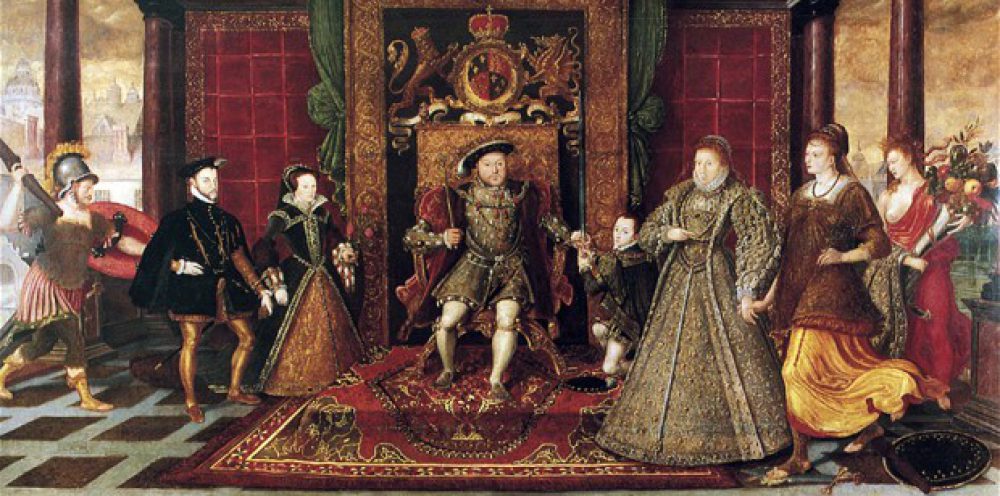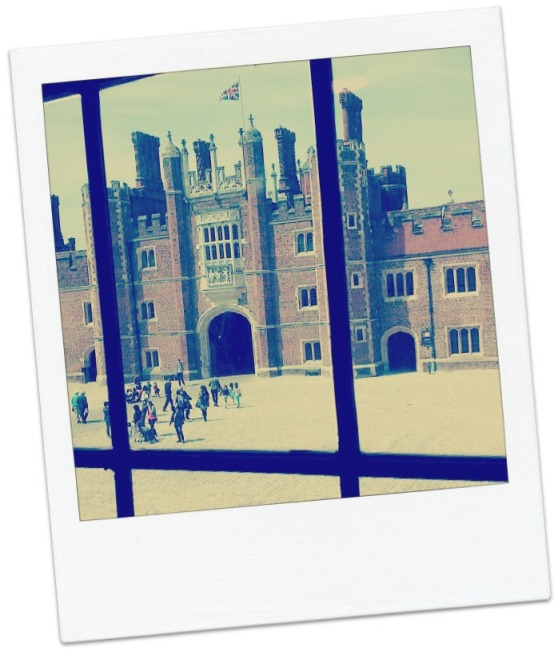It is both a blessing and a curse that I was born in, shock horror, the much maligned London Borough of Croydon. The curse being I spent most of my University years shuffling awkwardly through ‘where are you from?’ exchanges. The blessing? Growing up surrounded by a whole lot of (Tudor) history. Here’s my personal top six historic sites south of the river Thames.
Number Six:
The Whitgift Almshouses/Parish Church, Croydon Town Centre, London Borough of Croydon
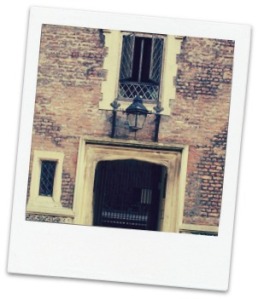 Nestled like an oblivious ghost between tram tracks and a busy shopping centre is the old Whitgift Hospital. Now known as the Croydon Almshouses, with it’s red bricks and lattice windows the building is unmistakably Tudor.
Nestled like an oblivious ghost between tram tracks and a busy shopping centre is the old Whitgift Hospital. Now known as the Croydon Almshouses, with it’s red bricks and lattice windows the building is unmistakably Tudor.
Established in 1596 by Elizabethan Archbishop of Canterbury John Whitgift, this hospital (more like a modern old people’s home) was designed to take in ’28 poor brethren and sisters’ of over sixty, from either Lambeth or Croydon. These men and women were to be of worthy behaviour and could be thrown out for a variety of misdeeds including ‘heresye, sorcerye, any kinde of charmmynge or witchcrafte.’ Residents still live in the Almshouses and maintain Tudor traditions, including being provided their stipend (a small amount of cash) every Friday just as in the days of yore. All within a stones-throw of a three storey Primark, Who’da thunk it?
Venture down the hill from the Almshouses (Church Street) and you will be met with the prospect of the Parish Church of Saint John the Baptist. The building is a Victorian recreation of an earlier church and still maintains a deliciously creepy, shaded graveyard (though maybe that’s just because my dad used to tell me Dracula lived there). Inside the church there are the grand tombs of numerous early modern Archbishops including Whitgift himself.
Number Five:
Croydon Palace/The Old Palace, Croydon Town Centre, London Borough of Croydon
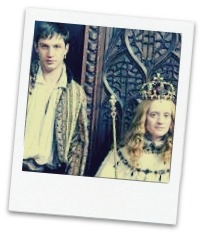 Okay, so I’m sticking fairly hard within the Croydon theme. In fact, geographically within a couple of streets. On the central Croydon side of Parish Church lies what is now Old Palace girls school. The school’s buildings, whose walls mark the boundary of Parish Church’s graveyard, have an absolutely fantastic history.
Okay, so I’m sticking fairly hard within the Croydon theme. In fact, geographically within a couple of streets. On the central Croydon side of Parish Church lies what is now Old Palace girls school. The school’s buildings, whose walls mark the boundary of Parish Church’s graveyard, have an absolutely fantastic history.
Old Palace, known in the past as Croydon Palace, provided a home away from (their many other) homes to the Archbishops of Canterbury. Archbishop Cranmer was given lands by Henry VIII here after Henry found the town made him sick to the core due to it’s links with charcoal production. Whilst in the early fifteenth-century James I of Scotland had been imprisoned in the palace and wrote a variety of letters from Croydon.
Carrying on the town’s royal connection, Queen Elizabeth I too visited the palace, on one occasion for seven days in 1573. Amongst the memos discussing room arrangements is the name of the ‘Erle of Leicester’, Robert ‘Robin’ Dudley the Queen’s long-term favourite (pictured left as portrayed by Tom Hardy in the 2005 ‘Virgin Queen’). A recent letter to BBC History magazine revealed that one of Old Palace’s year seven forms actually have the privilege of being registered each morning in Elizabeth’s former bedchamber. To be very Croydon for a moment, I am like, well jel!
Number Four:
Beddington Park/Carew Manor, Beddington, London Borough of Sutton
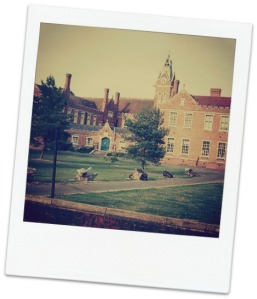 Heading out past Croydon towards Wallington/Sutton lies Beddington Park and Grange (Croydonites might know it as the park where you saw Zippos circus in the ’90s). Another Tudor hotspot, the park boasts some beautiful, unspoilt walks but it’s pièce de résistance has to be Carew Manor (left).
Heading out past Croydon towards Wallington/Sutton lies Beddington Park and Grange (Croydonites might know it as the park where you saw Zippos circus in the ’90s). Another Tudor hotspot, the park boasts some beautiful, unspoilt walks but it’s pièce de résistance has to be Carew Manor (left).
Beddington is a particularly historic area. The area has been inhabited since the Bronze Age, with evidence of a Roman Villa found by archaeologists in the ’30s as well as a mention in the Doomsday Book. The Carew’s for whom the manor/school is now named stamped their authority over the area buying up large swathes of land as early as the reign of Edward III.
Yet perhaps the most exciting prospect about the park is Carew Manor’s Tudor links. Sir Nicholas Carew was a favourite and friend of Henry VIII. In 1531, Henry visited Carew at his house in Beddington to charge him with heading to France to discuss his marriage to Anne Boleyn with Francois I. Yet as the old saying of mice and men goes, in 1539 Carew found himself un-amicably seperated from his head at the Tower for involvement in treasonous correspondence with the Catholic de la Pole family.
Other royal visitors to the house include both Elizabeth and James I. Elizabeth in fact is supposed to haunt the park. Maybe she is still vexed that her favourite Sir Walter Raleigh married Elizabeth Throckmorton of Carew Manor behind her back in 1592.
Number Three:
Nonsuch Park/Mansion, Cheam, London Borough of Sutton
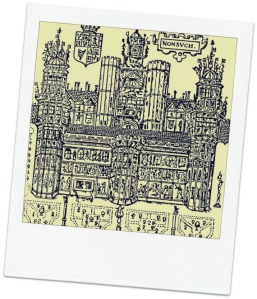 Beginning construction in 1538, two years after the death of Anne Boleyn and a year after that of Jane Seymour, the King swept away a whole village (Cuddington) to make way for his grand Renaissance palace. Covered in stonework, with ornate eight-sided towers, the magnificence of the now lost Palace can be seen in a recent recreation worked upon at Oxford University.
Beginning construction in 1538, two years after the death of Anne Boleyn and a year after that of Jane Seymour, the King swept away a whole village (Cuddington) to make way for his grand Renaissance palace. Covered in stonework, with ornate eight-sided towers, the magnificence of the now lost Palace can be seen in a recent recreation worked upon at Oxford University.
After the death of Bluff King Hal the Palace exchanged hands a variety of times throughout the sixteenth and seventeenth-centuries. In 1670 Charles II gifted it to his main squeeze Barbara Villiers, spelling disaster for the outdated abode. She broke down the palace, selling on the parts. Yet though nothing remains of Henry VIII’s grand designs-esque Palace (named because there was literally ‘none such’ palace as his, geddit?) In situ fragments of the elaborate masonry can still be seen in the Museum of London.
Today Nonsuch Mansion, a later building presides over the park and upon certain days of the month some of the old servants wing from the original palace can still be viewed. The park is still well worth a visit for the beautiful old trees and gardens and to get swept up in imagining the Palace as it once was. Don’t forget to drop intoas well the nearby Tudor White Hall either. A large plaque now marks the spot of the old palace, and did I mention the newer mansion has both Henry VIII and Elizabeth I in stain glass form and a really amazing coffee shop?
Number Two:
Ham House and Garden, Ham, London Borough of Richmond
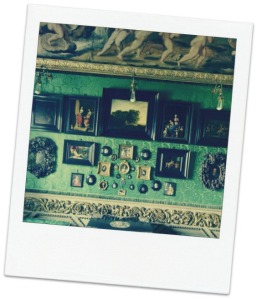 Okay, now this one was hard, I was very tempted to put this place as number one. Ham House provided me with my first post-University paid role and whilst working there I absolutely fell head-over-heels for the place. How could you not? Given that I spent nearly six months helping to run the shop here as well as room guiding, I could warble on about the house forever BUT I’ll keep it brief.
Okay, now this one was hard, I was very tempted to put this place as number one. Ham House provided me with my first post-University paid role and whilst working there I absolutely fell head-over-heels for the place. How could you not? Given that I spent nearly six months helping to run the shop here as well as room guiding, I could warble on about the house forever BUT I’ll keep it brief.
Ham is like a time machine. Due to the later ‘eccentric’ (as they were then known) Tollemaches the house has mainly been kept, with a few alterations, as if still in it’s seventeenth-century heyday. Walking through the Great Hall, into the Duchess’ closets, through her and her husband’s rooms – it still very much feels like they have just left. In fact, when opening the house on a Friday morning I regularly kept my eyes firmly fixed at window shutters I was opening for fear of spotting the Duchess and her ghost dog in the corner of the room!
The house has many wonderful and unique survivals including the Duchess’ extremely rare early en-suite bathroom (she kicked her husband out of his room to build it), a variety of objects that link to black/colonial history, Charles I’s prayer book and the gem in the crown, the Green Closet (picture right). A fabulous cabinet of miniatures which is pretty much a who’s-who of early modern society and was my absolute favourite room to work in! Alongside it’s collection, hearing the story of the Elizabeth Murray/Dysart/Maitland is well worth the visit. An early modern Scarlett O’Hara, she used marriage, her charms and intelligence to protect and maintain her family home throughout the political upheavals of the seventeenth-century. Her most remarkable feat in my mind though? Living to old age after eleven births! Ouch.
Did I mention too that our modern version of royalty, celebrities that is, often visit the House which is regularly used for filming? Recent titles that utilised the house as a location include ‘The Young Victoria’, ‘Anna Karenina’ and (so upset I missed it) ‘Horrible Histories’.
Number One:
Hampton Court, East Molesey, London Borough of Kingston
Last but not least, how could it not be at the top? Number one is without doubt Hampton Court. A tale of two palaces, both equally splendid. Though I’m fairly well assured that if you have read -this- far upon this blog you have already visited, let me recount the Palace’s charms for me.
Hampton Court is a place very close to my heart, as a child I was regularly taken there by my grandfather and remember well sitting underneath the well manicured trees for a picnic.
The changes in the Palace since 2009 too have further embedded my love for the place. With regular exhibits on top of old favourites such as the Tudor kitchens, Chapel Royal and maze there’s always something new at the Court. In fact since I last went in January the new Georgian Chocolate Kitchens have been opened up, and God knows I love chocolate!
Walking over the bridge from the train station as the great palace unfolds before you I can assure you is a sight you will not forget.
Henry VIII may have come to the throne over 500 years ago but links to the Tudor past will be all around you – sometimes you just have to do some digging!
